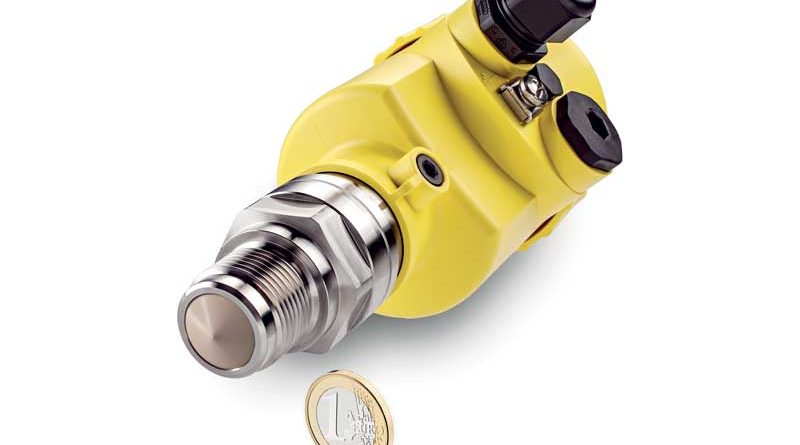Radar sensors: the future of level measurement
High frequency radar sensors represent a new era in level measurement technique. Many advantages are provided by 80 GHz sensors, which have a small antenna thanks to amplified accuracy. An example is Vegapuls 64 by Vega
by Noemi Sala
Radar tools for level measurement in liquids, which work with a transmission frequency of 80 GHz, have been recently launched on the market by two manufacturers in the process control industry: it is the proof that radar can get wherever it wants. It is now time to understand why radar technology is so successful, and the advantages provided by these sensors in industrial processes.
A technology which is now accessible to various industrial sectors
The availability of 80 GHz radar sensors, as always, stems from investments and innovation. Microwave development is so advanced as to make this technology easily accessible in many industrial environments. Cost was however no the only deterrent for plant manufacturers: high frequency sensors could not withstand harsh process conditions, unlike their low frequency counterparts, insensitive to foam and capable of functioning even in presence of condensation and buildup.
Modern radar tools are developed to overcome such obstacles with a broad dynamic field and software algorithms which filter off interference. Now that 80 GHz radar is available and may be used for level measurement in liquids, users may concentrate on sensors with higher accuracy, compact size and high resolution.
Higher signal accuracy for an optimized level measurement
The first advantage provided by 80 GHz radar is a better focusing, essential for an accurate level measurement. The new tools send out signals with excellent results. The broad opening angle of 26 GHz sensors (and of the previous 6 GHz ones) stopped radar signals from detecting level among stirrers, heating coils and other internal installations. The reflections caused by these obstacles altered the echo curve: users were forced to carry out adjustments to monitor the liquid’s actual level. New high frequency models have much narrower angles which avoid the installations within the tank. This feature is ideal for the chemical and food industries, where internal obstacles are very frequent and available space is limited.
Smaller antennae: size and accuracy combined
80 GHz have a smaller antenna thanks to amplified accuracy. The new Vegapuls 64 by Vega, for instance, does not require a wide cone to focus its beam towards the material requiring measurement. The tool’s compact size represents a great advantage, especially in cases of retrofitting. It is now possible to integrate highly advanced radars in existing plants without thousands of changes to the tanks. Smaller tools are at any rate not just suitable for older tanks, but can help manufacturers to react in a fast and effective way to market requests. In pharmaceutical and chemical industries the growing trend is the production of lots, allowing to obtain seasonal products and low volumes with a lower investment. Small lots are produced in small tanks, where it is impossible to use radar because of the small process fittings. Thanks to the compact deign of the 80 GHz radar sensors, operators will no longer have to give up measurement accuracy on account of space constraints.
A greater resolution for efficient production processes
When the level of liquid in a tank becomes sufficiently low, a 26 GHz radar will consider the echo produced by the material and by the bottom of the tank as a single echo.
This erroneously warns he operator that the tank is empty, thwarting the efficiency of the process. 80 GHz tools measure the liquid right up to the last millimetre providing accurate data, useful for the optimization of the production processes. The greater resolution is a great advantage even in particular concerns such as shipyards, where level precision in large ballast tanks is important.

